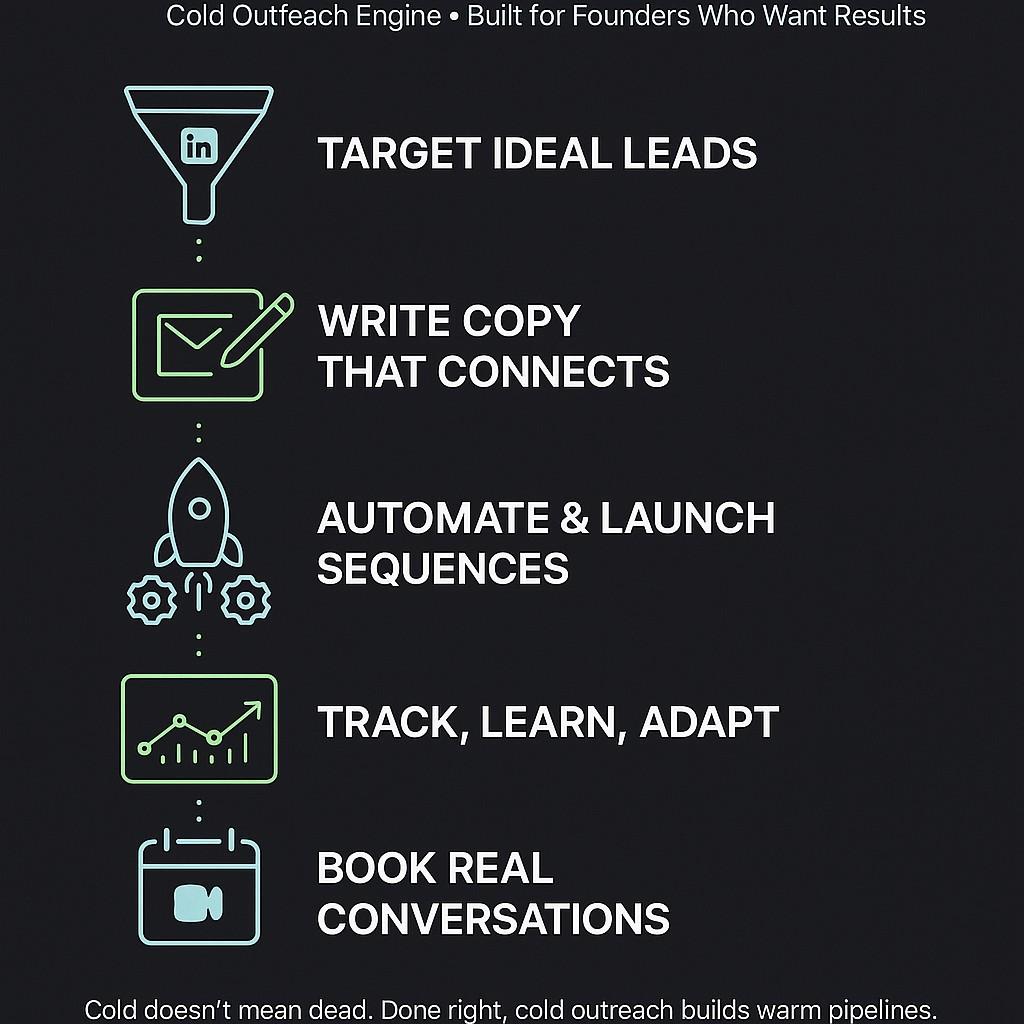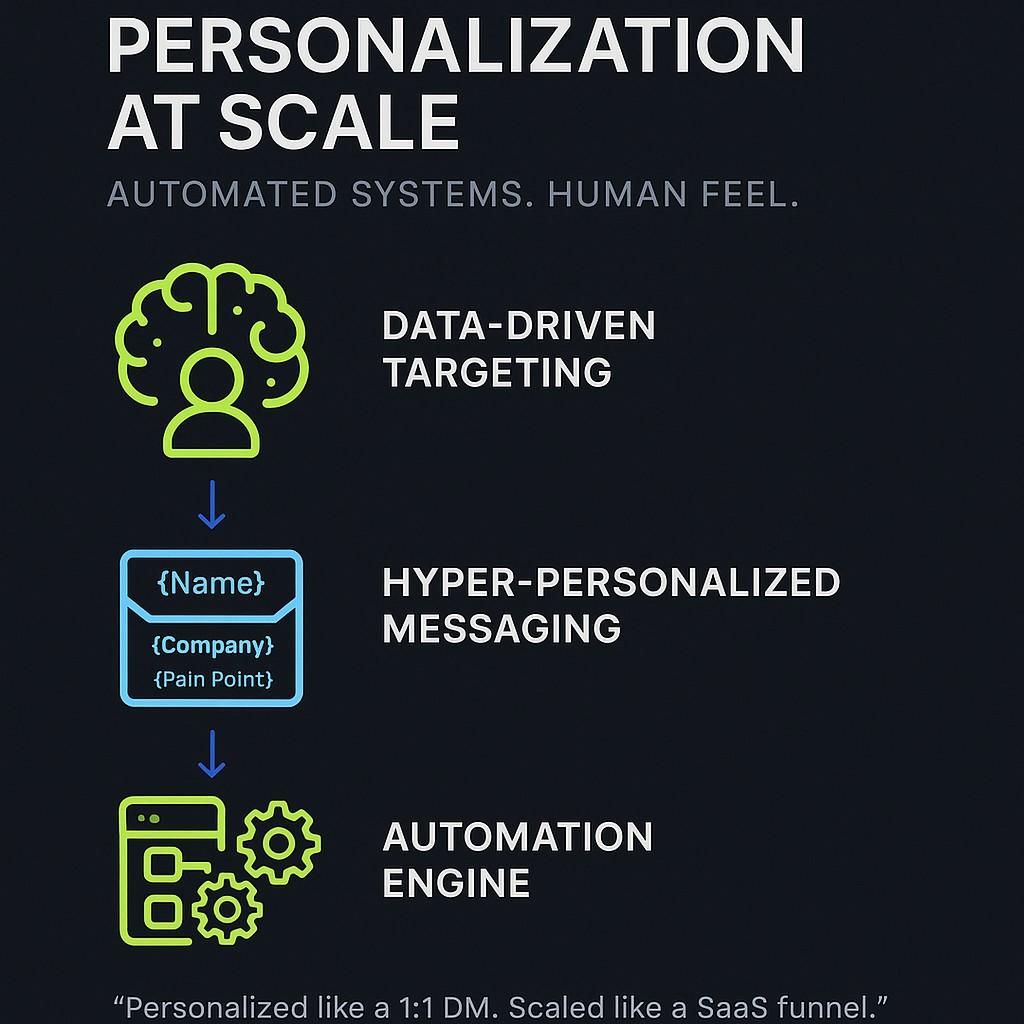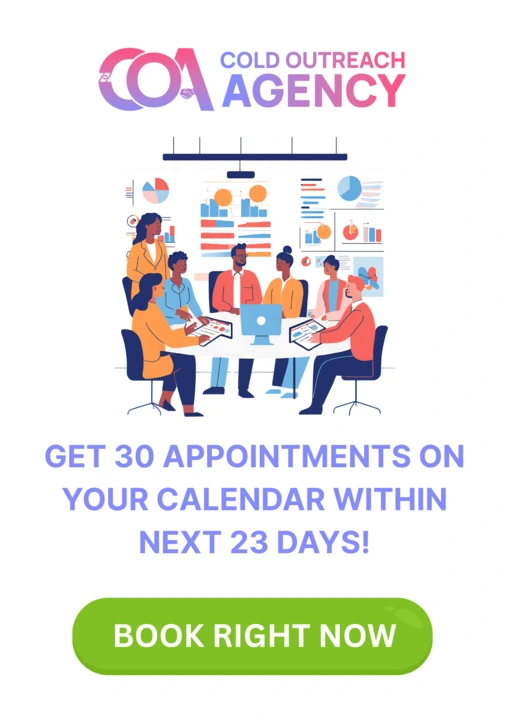Let me tell you something straight up.
If you’re still relying on just cold email or just LinkedIn outreach to generate leads, you’re leaving serious money on the table. One platform alone isn’t enough anymore. The decision-makers you’re trying to reach? They’re busy. Their inboxes are flooded. Their LinkedIn is noisy. You need to be smart, consistent, and everywhere.
This is exactly why I doubled down on a multi-channel outreach system using both LinkedIn and cold email. And the results? Insane open rates. More replies. More booked calls. And best of all—warmer conversations that actually convert.
In this article, I’m breaking down exactly how I combine LinkedIn and email outreach into a seamless, scalable, and ROI-positive lead generation machine. I’m not holding anything back. If you implement this process right, you’ll never struggle to generate leads again.
Let’s go.
Why You Should Combine LinkedIn and Cold Email in the First Place
Before I dive into the how let me make this super clear:
LinkedIn + email > LinkedIn OR email
Here’s why this combo works so damn well:
People check both platforms—LinkedIn is where they network, and email is where they work.
Familiarity builds faster—You message someone on LinkedIn, and then your email lands in their inbox. You’re not a stranger anymore.
More touchpoints = more trust—Instead of 1 or 2 chances, you now have 4–6+ touchpoints to earn a reply.
You sidestep gatekeepers—LinkedIn messages often skip past assistants or spam filters that block emails.
Higher reply rates—I’ve consistently seen up to 30–40% more replies when combining both channels versus either one alone.
This isn’t a theory. I run a Cold Outreach Agency where we do this at scale for clients in SaaS, agencies, and B2B services. And every time we implement this dual-channel strategy, appointment rates go through the roof.
Now let’s talk about how to put this system into play.

Step 1: Start With a Crystal-Clear ICP
Don’t even think about starting outreach—email, LinkedIn, or both—without knowing exactly who your Ideal Customer Profile is.
Here’s how I define it for myself and my clients:
Industry: Be specific (not just “SaaS,” but “B2B SaaS founders in HR tech doing $1M–10M ARR”)
Job Titles: Founders, CEOs, Marketing Heads, etc.
Company Size: This affects relevance and personalization.
Pain Points: What’s the #1 problem they’d pay to fix right now?
Tech Stack: Use tools like BuiltWith and Wappalyzer to qualify.
This step is the foundation. Every message, subject line, and CTA needs to speak directly to this ICP.
Step 2: Build a Clean, Dual-Use Lead List
Now that you know who you’re targeting, you need a clean list with data points usable for both LinkedIn and email outreach.
Here’s my usual process:
1. Use LinkedIn Sales Navigator to filter.
2. Export with tools like Apollo, Clay, or PhantomBuster to get:
Full name
Job title
LinkedIn URL
Verified email address
Company name and domain
3. Manually verify any emails you’re unsure of with NeverBounce or ZeroBounce.
4. Tag prospects into buckets for personalization: industry, problem, role, etc.
Keep your data tight. One bad lead can ruin your domain, deliverability, and LinkedIn limits.
Step 3: Start With LinkedIn (Soft Touch)
I always start the outreach process with LinkedIn connection requests first. Why? Because it’s softer. Warmer. Low resistance.
Here’s my standard connection message template:
> “Hey [First Name], saw you’re leading [Job Title] at [Company] — looks like we serve similar audiences. Let’s connect!”
Short. No pitch. No paragraph. No links.
If you’re targeting busy founders or execs, they don’t have time to read a mini-blog in the first message.
Once they accept, I wait 1–2 days, then send a value-driven follow-up message. Something like:
> “Thanks for connecting, [First Name]. Quick question — are you actively doing outbound at [Company]? I run cold outreach campaigns for B2B teams and am just curious about what’s working on your side these days.”
You’re opening a conversation, not forcing a pitch.
Step 4: Follow Up with a Cold Email Sequence
While the LinkedIn connection request is warming them up, the email follows as your next strike.
I usually wait 2–3 days after sending the LinkedIn connection (or after it’s accepted), then hit them with the first cold email.
Here’s the basic sequence I use:
Email 1: Problem + Curiosity
Subject: Quick question, [First Name]
> “Hey [First Name],
I’ve been speaking with a few [industry] founders lately and noticed many are struggling with [insert specific pain].
Just curious—are you also trying to [achieve outcome] this quarter at [Company]?
Worth a quick chat?”
Email 2: Value Drop
Subject: [First Name], 1 quick idea for [Company]
> “Hey [First Name],
I looked at [Company] and had a quick thought on how you could [improve X metric / solve Y problem] using [your offer].
Happy to send over a short Loom if helpful.”
Email 3: Breakup (With Humor or Bold CTA)
Subject: Should I stay or go?
> “Hey [First Name],
Not sure if now’s bad timing or if you’ve been kidnapped by inbox overload. Either way, no pressure.
If you’re open to a quick brainstorm on how we help [X role] get [Y result], happy to jam.”
Let this run parallel to your LinkedIn messages.
Step 5: Use Touchpoint Stacking
Here’s where the magic happens.
It’s not just that you’re using both LinkedIn and email. It’s how you layer them to create intentional touchpoints that reinforce each other.
Here’s a typical timeline I use:
Day Channel Action
1 LinkedIn Send a connection request
2 Email Send cold email #1
3 LinkedIn Like/comment on their post (if active)
4 Email Follow-up email #2
5 LinkedIn Message: “Saw my note? No rush—just checking in.”
7 Email Breakup email
9 LinkedIn Final ping: “Still relevant?”
This is 7+ touchpoints across 2 channels in 9 days. That’s why it works.
It builds familiarity without being annoying. And by the time they reply, they already know your name.
Step 6: Track Everything. Measure. Optimize.
If you don’t track your outreach, you’re flying blind.
Here’s what I track (and you should too):
Open rates (email) → Are your subject lines strong?
Reply rates (email + LinkedIn) → Is your message resonating?
Connection acceptance rates (LinkedIn) → Are you targeting right?
Positive replies → Real buying intent
Booked calls → Ultimate goal
I use tools like:
Lemlist, Smartlead, or Instantly for email
PhantomBuster, Dripify, or Zopto for LinkedIn
Google Sheets or Airtable for tracking KPIs
Optimize weekly. Test new scripts. Tweak CTAs. Remove dead leads. Add new ICP buckets.
Outreach is a science and an art. Keep testing till you crack your formula.
Step 7: Personalization at Scale

That’s just not scalable.
But I do light personalization based on:
Their company (e.g., “Saw you just raised a seed round—congrats!”)
Their LinkedIn headline or post (e.g., “Loved your recent post on outbound vs. inbound.”)
Their job role (e.g., “Most [CMOs] I talk to struggle with [pain]. Same for you?”)
Use shortcodes in tools like Instantly or Smartlead to insert variables. Mix with personalization templates like:
> “Hey [First Name],
Saw you’re [Job Title] at [Company]. Curious—how are you approaching [pain point] these days?”
That’s all it takes to sound human without spending 15 minutes per message.
Final Thoughts: Why Multi-Channel Outreach Is the Future (Not a Tactic)
With meetings, investor decks, team drama, Slack pings, LinkedIn notifications, and an inbox that looks like a war zone.
They’re not being rude. They’re being human.
That’s when your cold message stops being “cold.” It starts feeling warm. Intentional. Familiar.
And that, right there, is the edge.
It’s about creating buying moments.
You could have the best product or service on the planet. But if your prospect doesn’t feel the urgency, the timing, or the context—they won’t reply.
What combining LinkedIn and cold email allows you to do is manufacture context.
It lets you slowly layer trust, interest, and curiosity over a series of touchpoints. And that’s how you go from “never heard of you” to “this looks interesting” to “let’s jump on a call.”
You’re creating the conditions for a sale, not forcing one.
The Real ROI Comes From Relational Momentum
At first, it barely moves.
But then you follow up on email. You like their post. You send a DM. You drop a quick value-driven insight. You follow up again.
And suddenly, you’re not just that guy pitching “cold outreach.” You’re the familiar name. The proactive expert. The one who stands out from the noise.
That’s relational momentum.
It’s what turns a cold lead into a conversation, and a conversation into a close.
You can’t build that momentum if you’re relying on just one channel. But with LinkedIn and email working together? It compounds. Fast.
Playing the Long Game (Without Wasting Time)
Here’s another hard truth: Outreach isn’t just about who replies today.
It’s about who remembers you tomorrow.
That founder who ignored your email? Maybe they were busy. Maybe the timing was off. Maybe they got your message but didn’t respond.
But then they see your face again on LinkedIn. They see your comments. Your content. You hit them up next quarter with a smart follow-up.
And guess what?
Now the timing’s right. And you didn’t need to start from scratch—you already laid the groundwork.
That’s the long game. And multi-channel is how you play it without wasting time on people who will never convert.
You’re not spamming. You’re strategically placing yourself in the decision-maker’s line of sight.
You’re building mindshare. That’s what ultimately leads to market share.
Scaling This Without Losing Your Human Touch
A lot of people ask me, “Chetan, can this scale?”
Short answer: yes.
Long answer: yes, if you do it smart.
The key to scaling multi-channel outreach is intelligent systems paired with light personalization.
You build structured data sets that can be used for both LinkedIn and email.
You write modular templates that let you insert custom variables and context.
You use outreach tools that automate sequences without sounding robotic.
You track open rates, replies, and positive responses, and optimize like a beast.
That’s what we do every day at Cold Outreach Agency. It’s not about blasting 10,000 messages. It’s about sending 500 relevant ones.
And when done right, this becomes a predictable client acquisition machine.
What Happens When You Master Both Channels?
Let me paint a picture.
You wake up. Check your CRM. Five new replies. Two booked calls. One positive response from a high-ticket lead you’d die to close.
You didn’t pay for ads. You didn’t wait for referrals. You didn’t sit around hoping inbound would kick in.
You made it happen with a strategic outreach system that works on autopilot.
LinkedIn warmed them up. Email moved them forward. And together, they created momentum you could feel in your pipeline.
You’re not chasing leads anymore. You’re engineering attention and converting it into predictable growth.
That’s the difference between average outreach and multi-channel mastery.
You Don’t Need Magic. You Need Method.
Too many founders, agency owners, and sales teams are stuck in “hope marketing.”
They send one email. No reply. They give up.
They connect on LinkedIn. No message. They disappear.
But success doesn’t come from sporadic outreach. It comes from structured consistency.
You don’t need a silver bullet. You just need:
The right ICP
A dual-channel list
Warm LinkedIn touchpoints
Smart cold email sequences
Timely follow-ups
Relentless iteration
You follow this, and you’ll start seeing a pipeline that grows itself—not through luck, but through systems.
My Final Ask to You
If you’ve read this far, you’re not just looking for a tactic. You’re serious about building something that scales.
So here’s what I want you to do:
Stop thinking “LinkedIn vs Email.” Start thinking “LinkedIn + Email.”
It’s not about which one works better. It’s about how they work better together.
Test it this week. Build a small lead list. Connect on LinkedIn. Then follow up on email. Track the results. See what happens.
Chances are, you’ll get your first reply within 48 hours. And once that happens, you’ll never go back to single-channel outreach again.
You’ll see the real power of touchpoint stacking.
You’ll see the magic of context, timing, and relevance working in your favor.
And most importantly—you’ll start owning your growth, instead of waiting for it.
Let’s Build a Pipeline That Doesn’t Sleep
This isn’t about tactics. It’s about creating a repeatable client acquisition engine.
Because once you have a system that feeds your pipeline daily—regardless of market, season, or platform algorithm—you stop chasing clients.
You start attracting them.
You start closing them.
You start scaling with confidence.
And if you’re anything like me—you didn’t start your business to play small.
So let’s build something that generates leads while you sleep.
This isn’t a growth hack. It’s not a “new strategy.”
It’s the new normal for modern outbound.
The days of blasting 1000 cold emails and praying for leads? Dead.
The days of only using LinkedIn and waiting weeks for replies? Over.
Today’s B2B buyers are smart. They’re selective. They ignore bad outreach. But if you’re consistently showing up in their inbox and on their LinkedIn, with a clear message that speaks to their pain…
…you win.
So, if you’re serious about scaling your lead generation, don’t just pick a channel—own both.
Because when you combine cold email + LinkedIn with a smart strategy, a solid list, and real follow-up…
That’s how you stay top of mind.
That’s how you generate consistent leads.
That’s how you grow.
Let’s build.

